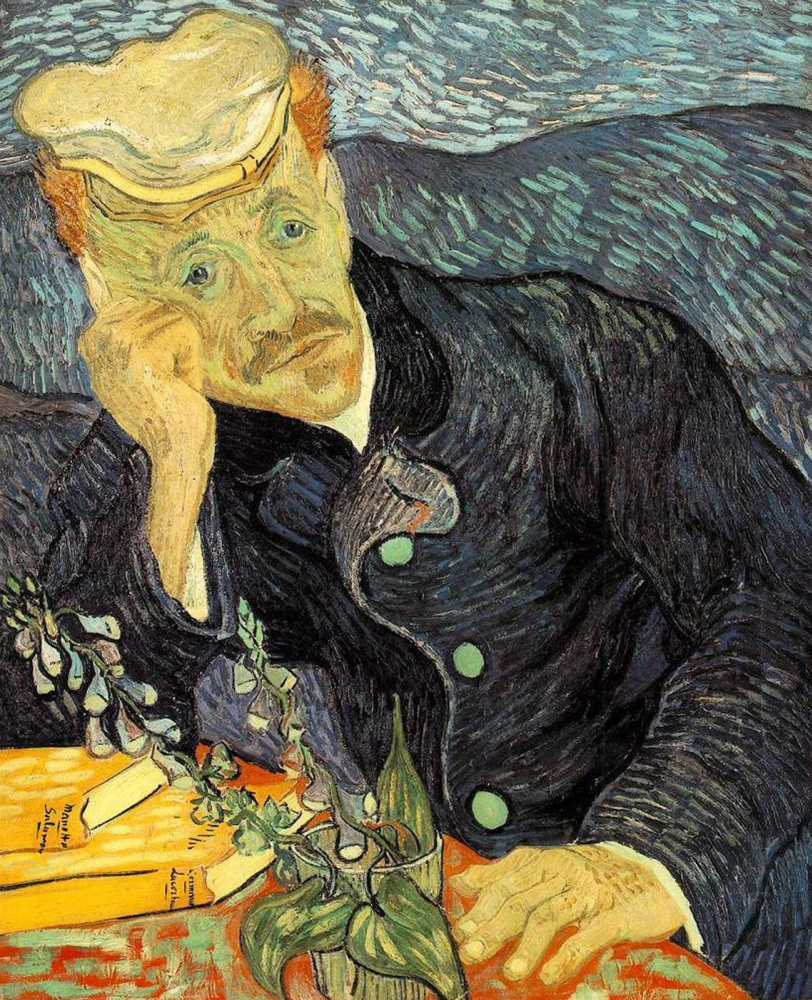log in
Enter site
Login to use Arthive functionality to the maximum
Portrait of doctor Gachet
Vincent van Gogh • Painting, 1890, 67×56 cm
Description of the artwork «Portrait of doctor Gachet»
In June 1890 Vincent van Gogh wrote to Theo Burt of overs that it is working on portrait of doctor Gachetwho has said his close friend: "Very bright and very bright hair, hands, too bright, blue jacket and cobalt background. He sits, leaning on a red table, where is yellow book and a sprig of Foxglove with the purple flowers. Mr. Gachet in awe of this portrait, and demands that I, if possible, wrote to him exactly the same".
Paul Ferdinand Gachet was possessed of great artistic taste and a great "nose" for good and promising artists. First up in the tiny attic of Vincent, which he filmed in Auvers-sur-Oise, and seeing his work, the doctor realized that before him a real genius, albeit totally mad. Gachet, van Gogh says that the resumption of his seizure very unlikely, and gives the artist the Council to work safely and much. Kind of a weird recommendation to the person who used work had driven themselves to a state of extreme exhaustion. But it was exactly what I would like to hear Vincent. He's still with the same youthful fervor given to the work of this new friendship, as before, blindly falling in love with a person belonging to him with interest and kindness. Just a couple of months Dr. Gachet was van Gogh for once a friend and father. The father, whom the artist always wanted to have: fluent about art, with interest listening to the Vincent, and most importantly, not ashamed and not decrying it.
But despite good relations with the doctor, in one of his last letters to Theo, Vincent writes: "I think in no way we can count on Dr. Gachet. First, he's sick even more than I do, or say, as much as I do. And when the blind leads the blind, won't they both fall into the ditch?"
Van Gogh actually wrote second portrait of Dr.. Some researchers believe that he was writing himself Gachet. In any case, both portraits are very similar compositionally. Remains unchanged and another small detail is the flower of digitalis, which is used for the treatment of heart failure, but the overdose turns into a deadly poison.
Author: Eugene Sidelnikov
Paul Ferdinand Gachet was possessed of great artistic taste and a great "nose" for good and promising artists. First up in the tiny attic of Vincent, which he filmed in Auvers-sur-Oise, and seeing his work, the doctor realized that before him a real genius, albeit totally mad. Gachet, van Gogh says that the resumption of his seizure very unlikely, and gives the artist the Council to work safely and much. Kind of a weird recommendation to the person who used work had driven themselves to a state of extreme exhaustion. But it was exactly what I would like to hear Vincent. He's still with the same youthful fervor given to the work of this new friendship, as before, blindly falling in love with a person belonging to him with interest and kindness. Just a couple of months Dr. Gachet was van Gogh for once a friend and father. The father, whom the artist always wanted to have: fluent about art, with interest listening to the Vincent, and most importantly, not ashamed and not decrying it.
But despite good relations with the doctor, in one of his last letters to Theo, Vincent writes: "I think in no way we can count on Dr. Gachet. First, he's sick even more than I do, or say, as much as I do. And when the blind leads the blind, won't they both fall into the ditch?"
Van Gogh actually wrote second portrait of Dr.. Some researchers believe that he was writing himself Gachet. In any case, both portraits are very similar compositionally. Remains unchanged and another small detail is the flower of digitalis, which is used for the treatment of heart failure, but the overdose turns into a deadly poison.
Author: Eugene Sidelnikov


